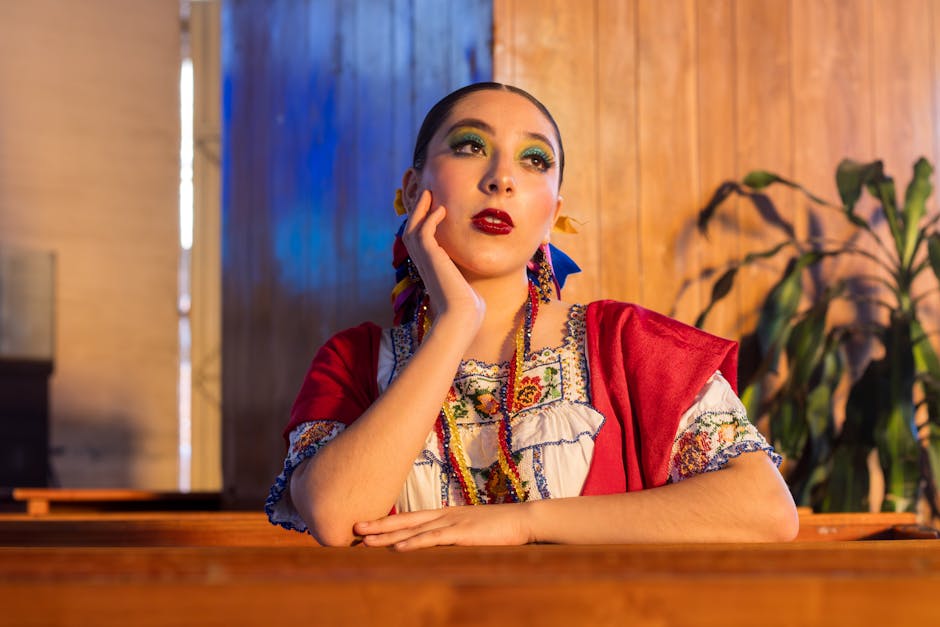Introduction to Sustainable Makeup Products
Sustainable makeup products are gaining ground, especially among Millennials and Gen Z. Why? It’s simple. These generations care deeply about the planet and their impact on it. They want products that are kind to the earth, animals, and their skin. Sustainable makeup means products made with natural, often organic ingredients that are sourced responsibly. They come in eco-friendly packaging that can be recycled or is biodegradable. Unlike traditional makeup, these products avoid harmful chemicals, avoid animal testing, and aim to reduce carbon footprint. The rise in their popularity is a nod towards a more conscious consumerism, where what you buy reflects your values. So, when you choose a sustainable makeup item, you’re not just applying color to your face; you’re making a statement about the kind of world you want to live in.
Defining Sustainability in the Beauty Industry
When we talk about sustainability in the beauty industry, we’re really digging into how brands manage to balance beauty and care for the planet. It’s not just about the end product looking good on your shelf or your skin. It’s about the entire lifecycle of that product – from the ingredients sourced, how they’re harvested, to the impact of the product’s packaging on our environment. Sustainable beauty brands are those that use ingredients that are ethically sourced, meaning they’re kind to the planet and to the people who provide them. They often use packaging that’s either recyclable or biodegradable, minimizing waste. Also, these brands tend to avoid using harsh chemicals that can harm aquatic life when they wash down our drains. In a nutshell, when a beauty product is called sustainable, it’s good for you, the planet, and its inhabitants. This approach resonates strongly with Millennials and Gen Z who are not just about the glam but also about making ethical choices.
Environmental Concerns Driving Millennials and Gen Z Towards Sustainable Products
Millennials and Gen Z are more eco-conscious than generations before them. They care deeply about the planet and see the massive impact that industries, including cosmetics, have on the environment. This concern isn’t just talk; it influences their buying habits. They’re shifting toward products that promise not to harm the planet. Here’s why:
First, they’re aware of the production impact. The process to make most traditional makeup involves chemicals and practices that hurt the environment. Millennials and Gen Z want products made in ways that reduce pollution and waste.
Second, they look at packaging. Tons of makeup products come in single-use plastics that end up in landfills, oceans, and harm wildlife. Sustainable makeup often comes in recyclable or biodegradable packaging, making it a clear choice for them.
Third, they value brand ethics. Brands that commit to sustainability, not just in products but in their overall operations, win their trust. These generations are willing to research and support companies that align with their environmental values.
Lastly, they believe in the power of change. By choosing sustainable products, Millennials and Gen Z hope to push the entire industry toward greener practices. They’re not just buying makeup; they’re voting for a healthier planet with their wallets.
In short, environmental concerns aren’t a trend for these generations; they’re a driving force shaping the future of consumerism, including the makeup industry.
The Ingredients List: What Makes Makeup Sustainable?
Sustainable makeup is all about what goes into it. Ingredients matter most. Here’s the deal: if it harms the planet, it’s not sustainable. Look for natural, organic, and ethically sourced components. This means plants or minerals that don’t mess with Earth’s vibes. Think about it like food for your face. You want clean, wholesome stuff, right? Avoid ingredients with hard-to-pronounce names. They’re often bad news – harsh chemicals, synthetic colors, and artificial fragrances. No thanks. Sustainable makeup also says no to animal testing. It’s about respecting all creatures. Plus, consider packaging. Biodegradable or recyclable is the gold standard. So, reading labels is crucial. The shorter the list, the better. And if you can’t eat it, maybe think twice about putting it on your skin. Sustainability is not just a buzzword; it’s about making choices that feel good for you and the planet.
The Packaging Dilemma: Less Waste, More Use
Millennials and Gen Z are all about reducing waste, especially when it comes to makeup products. For these eco-conscious generations, it’s not just about the product itself but the package it comes in. Traditional makeup packaging often ends up in landfills, taking years to decompose. So, the younger crowd is pushing for a change. They’re scouting for brands that offer reusable, recyclable, or biodegradable packaging. It’s a simple equation for them: less waste equals more use. This isn’t just good for the planet; it makes economic sense too. Opting for products with minimal packaging or ones that offer refills can actually save money in the long run. Plus, it feels good to support brands that are doing their part for the environment. Brands that have caught on to this are redesigning their products to meet these preferences, whether it means creating compostable packaging or ensuring their containers can be reused for a different purpose. The message is clear - the packaging has to be as thoughtful as the product inside it.
Economic Factors: Are Sustainable Makeup Products More Expensive?
Many people think that sustainable makeup products cost a lot more than the regular ones. It’s not that simple. Yes, upfront, some eco-friendly products might have a higher price tag. But here’s the thing, when you buy sustainable makeup, you’re also paying for quality ingredients and less harm to the planet. It’s like getting more bang for your buck. Also, consider the long game. Products made to last longer and cause less waste can actually save you money over time. Plus, there’s a growing trend. As more people buy sustainable goods, prices might drop due to demand and advancements in eco-friendly production methods. So, while you might pay a bit more now, you’re investing in a healthier planet and potentially cheaper prices in the future. Not to mention, many brands offer recycling programs or discounts for bringing in empty containers, making the sustainable choice easier on your wallet.
The Role of Social Media and Influencers in Shaping Preferences
Social media platforms are battlegrounds where opinions are shaped, products are showcased, and lifestyles are glamorized. Among Millennials and Gen Z, the sway of social media influencers is undeniable. These digital trendsetters aren’t just showing off the latest in fashion or tech; they’re increasingly vocal about sustainable living, including makeup. Brands that get a shoutout from these influencers see their products catapulted into the spotlight.
Why does this matter? Well, when a favorite influencer talks about a sustainable makeup brand that doesn’t test on animals or uses eco-friendly packaging, their followers listen. It’s not just talk; it’s a powerful endorsement. And in the echo chambers of Instagram stories, TikTok challenges, and YouTube hauls, these endorsements are amplified.
In essence, influencers serve as a bridge. They connect their audience with sustainable makeup brands, often explaining the why behind the what. They delve into the impacts of traditional makeup production and disposal, laying out why switching to sustainable products is not just good for the skin, but good for the planet too. It’s relatable, digestible knowledge that resonates with younger audiences eager to make informed choices that align with their values.
So yes, social media and influencers aren’t just shaping makeup preferences; they are steering a significant shift towards sustainability in the beauty industry. They champion the cause, one post, one product review, and one brand partnership at a time.
Brand Transparency and Ethical Practices: What Young Consumers Demand
Millennials and Gen Z are shaping the market, and they’re clear about what they want: transparency and ethics. They don’t just buy a lipstick or a foundation; they look into the ‘how’ and ‘why’ behind their products. For these conscious consumers, a brand’s commitment to being open about its practices and making ethical choices is key. This means providing clear information about where ingredients come from, ensuring products are cruelty-free, and showing that workers are treated fairly. Brands that ignore these demands risk losing trust and loyalty. In contrast, those that champion transparency and ethical practices not only win the hearts of young consumers but also set a new standard for the beauty industry. So, it’s not just about looking good on the outside but feeling good about the choices one makes.
The Psychological Impact of Using Sustainable Products on Younger Generations
Younger generations, namely Millennials and Gen Z, lean towards sustainable makeup products not just for their eco-friendly appeal but also for the mental boost they provide. This shift is deeply rooted in their desire to contribute positively to the environment. When they use products that align with their values, it instills a sense of pride and responsibility. This, in turn, boosts their self-esteem and overall mental well-being. They feel part of something bigger, a global effort to reduce pollution and waste. This sense of belonging strengthens their identity and their belief in the power of collective action. Moreover, the choice to use sustainable products often comes with a deeper understanding of the products’ ingredients and their impacts. This knowledge makes them feel empowered and informed, adding another layer to their satisfaction. So, it’s not just about looking good on the outside, but also feeling good on the inside, knowing they’re making responsible choices.
Conclusion: The Future of Makeup is Sustainable
So, what’s the bottom line? Sustainable makeup isn’t just a passing trend; it’s the future. Both Millennials and Gen Z are leading the charge, making it clear that they want products that don’t harm the planet. Their choices are pushing brands to rethink and innovate, leading to safer, eco-friendlier products. We’re seeing more recyclable packaging, cruelty-free formulas, and products made from natural ingredients. This shift is not only good for our Earth but also brings better quality and healthier options for the consumer. Remember, every purchase you make sends a message about the values you support. Choosing sustainable makeup isn’t just good for the planet; it’s a step towards a more ethical and conscious lifestyle. If the current trends are anything to go by, we’re headed to a future where the beauty industry is kinder, greener, and more inclusive.


